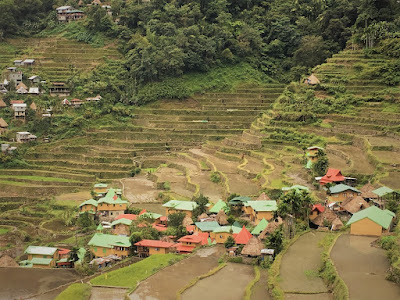By Chester B Cabalza
Blogger's Notes:
Commentary of an Academic
(Copyright @ 2017 by Chester B Cabalza. All Rights Reserved).
Manila formally played host to the
two-day Association of Southeast Asian Nations (ASEAN) Summit and related
summits last November 13-14, 2017 as part of the annual gathering of regional and
global world leaders. Concurrently ASEAN under the Philippines’ chairmanship
celebrates its golden anniversary as it aspires or struggles to achieve
cohesion and unity in diversity in spite of implied syndetic secretariat
function, fostered by a culturally-sensitive principle of ASEAN Way, cultivating
a collegial spirit as core existence in one of the oldest regional
organizations in the world.
The uniqueness of the ASEAN Way
collectively streamlined from the ethos of the five foreign ministers capped
from their habitus in playing golf to becoming the founding fathers, extremely
emphasizes the iota of national sovereignty and the commitment to
non-intervention into the affairs of the member-countries. Glorifying an
historical achievement at fifty years old, the Philippines takes the center
stage of chairing the ASEAN this year, setting the agenda for the fourth time as
the host in five decades.
Five decades after the founding of ASEAN,
three decades after the ASEAN summit in Manila, and a decade after the adoption
of the ASEAN Charter, did ASEAN take a lead as a catalyst of change to progress
or regress to survive a vision of prosperity and stability in Southeast Asia?
The absence of armed conflict among
member-states in the regional bloc perhaps affirms its first key success; this
feat could be its long-standing contribution to the region and the world
despite the intermittent establishments of formidable three pillars in political/security,
economic, and socio-cultural to create holistic ASEAN Community.
The ‘ASEAN Way’ as a traditional
instrument to run the organization is a way too slow that aims to accelerate a
certain velocity in making decisions and conventions. A long-held principle
based on consultation and consensus-based decision while establishing a more
concrete, systematic and productive mechanism for addressing conflicts and
security threats in the region has not been fully modified and reinvented.
ASEAN Way as a bedrock emphasizes the
importance of having one common language for all ASEAN member-states with
unified perception of threat in political, social and economic security
outlook, as well as the importance of social view on democracy and human rights. The establishment for whose commission was
recommended during the drafting of the ASEAN Vision 2025. The fallacy on
becoming a stumbling block presumes consensus on the peaceful resolution of
disputes, respect for international laws, and non-use of force.
The “geo-economic” capitalism subsumed
in the trading system within the region deconstructs few myths about the ASEAN
Way that symbolizes its being; rather, the regional organization’s fifty years
of existence can be reduced to a debutant’s party that has less capacity as a
dispute-solving organization. This embodies ASEAN’s failure as a model for
regional cooperation in which European Union (EU) has sophisticatedly led for
decades.
Hence it must be deemed that the ‘ASEAN
Way’ is the heart of ASEAN itself. The view that ASEAN can either become bedrock
or a stumbling block can be leaned to the belief that the organization should
be used as a platform to prepare for the future. The purpose of ASEAN is for
posterity delivering economic wealth for the region in the thrust of seamless
connectivity as One ASEAN Community; having beauty among diversity, and the
importance of the people-to-people agenda by promoting the quality of life of
the people in the region as it goes beyond its three pillars of community.
The effectiveness of community-building
in achieving the common goal of “One ASEAN, One Community” puts the Philippines
and the entire region in a gargantuan task of “Partnering for Change, Engaging
the World”. Furthermore by strengthening ASEAN, this can be a continuing and
lingering desire among many decision makers in the region. There is a greater
recognition that the group’s regional body and its institutions need to be
empowered in line with the ASEAN Community.
ASEAN’s progressive atmosphere has maintained
peace by socializing its member-states into principles and norms of
non-interference in internal affairs, respect for sovereignty, and renunciation
of threat and use of force all encapsulated in its ‘ASEAN Way” as enshrined in
the 1976 Treaty of Amity and Cooperation.
Engagement with the civilized world has
been the organization’s hallmark with its dialogue partnership system that goes
beyond the Dialogue Partners. But ASEAN should utilize conscientiously its
external relations to socialize other countries to the same norms and
principles toward an inclusive, open, and rules-based region. Quantity of
partnerships created by ASEAN should not become the success indicator; rather
it should put premium on how these partnerships contribute to the regional
community-building. All in all, the preservation of peace for the past five
decades has been ASEAN’s greatest achievement to date.
On
the other hand, regressive acts will continuously proliferate if and all ASEAN
member-states subside to maintain peace efforts in the region on its centennial.
The leniency in addressing gaps pronounced in the three ASEAN’s
community-building pillars will alienate the promises of the future and
dynamism of the next generations in the region. Building consensus and
socialization through regional integration along the process of globalization
should not lose a momentum in the ASEAN. In a preferable view, economic
inequity, political disenfranchisement, and people-to-people disengagement
should be addressed properly consistent with the strategic aims of the ASEAN
founding fathers.











































